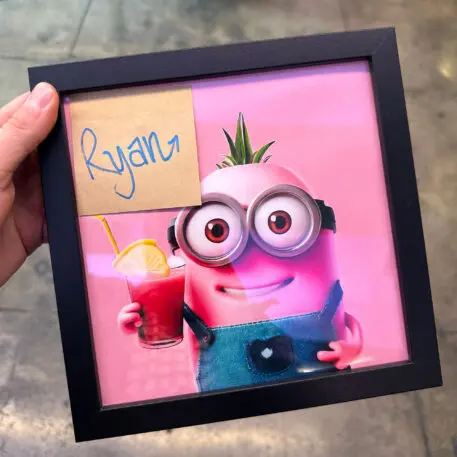There is a lot of debate right now about when the world of generative AI will have its “iPhone moment,” and, in a sense, what we’re actually asking is: When will all of this tech be suddenly at our fingertips?
This seems to be the exact breakthrough Microsoft is attempting to usher in with its newest update to its search engine Bing.
I was able to get a hands-on demo on May 4 of what will soon be rolling out to users around the world. On the top floor of a Microsoft store on Fifth Avenue in Manhattan, tablets were running the newest version of Bing and Microsoft’s Edge browser. After exploring all the new features, I’m not totally convinced it’s enough to make Microsoft the king of the AI heap, but it is nonetheless a bold step forward. It’s also proof that its $10 billion investment in AI research firm OpenAI has put them light years ahead of the Googles and Apples of the world when it comes to generative AI.
The new version of Bing runs on OpenAI’s newest language model, GPT-4. It integrates it further into the Bing search engine and the Edge web browser and centralizes all of its various processes into one interface—including the ability to generate images right in the same window, using OpenAI’s DALL-E 2 image tool. But Bing AI doesn’t just pull all of this into one window, it offers some significant upgrades on how these services work.
The big addition to Bing is chat history. If you’ve never used OpenAI’s ChatGPT, the AI creates a thread for every query you ask. If you come back to that thread, the AI just picks up where you left off. Bing now has that feature, as well, but it also allows you to name your chat threads, organize them, and export them to a PDF or Microsoft Word document.
Bing also has real-time access to Bing search results, a feature that, in its early stages, led to critics describing it as “psychotic.” The chatbot seems a lot more mild-mannered these days, and as a guard against fake results (aka hallucinations), when it returns summaries, it does so with citations pulled in from Bing search. Even more impressive, when running Bing’s AI inside the Edge browser, it can summarize long articles and will include in-page citations, allowing you to find the exact text it’s referencing.
I asked Bing for advice about where to go while I’m on a trip in Milan next week, and it spit out five decent-enough suggestions. It also allowed me to click on the links it was summarizing and then, via an AI chatbot sidebar in the Edge browser, it was able to answer specific questions about the web page I was viewing.
Sarah Mody, Microsoft’s director of global search and AI product marketing, tells Fast Company that they’re hoping to inspire “magic moments,” where the AI suddenly surprises you with what it’s capable of. For her, it was a realization that Bing AI could not only generate a recipe, but also organize the ingredients based on where they would likely be found in the supermarket (an admittedly impressive feat).
“It can scale from something that’s really fairly complex to something that’s really simple, but just would be time consuming,” she says.

Possibly in search of more of those magic moments, the Microsoft event also showcased non-research uses for Bing’s AI. There was a juice bar setup where human mixologists made smoothies based on recipes generated by the AI. I was asked to name a show that I had watched recently and suggested Succession. It spit out a drink called “Ryan’s Roy-al juice” (a pun on the Roy family at the center of the HBO show). It made me a juice that contained apples, lemon, pineapple, cucumber, and cayenne pepper, and was actually very tasty. Probably would have been better with some tequila, though.
There was also an AI image photo booth of sorts. You could ask Bing to generate an image, and it would then be printed out and framed. I asked it to make a Minion from the Minions franchise drinking my pink juice, which it did pretty well. Though it also made the Minion pink. I was asked by an employee working the event why I chose a Minion, and the truth is it’s usually something an AI knows how to generate pretty well (and also a good test of what kinds of copyrighted material is and isn’t allowed).

The question looming over this entire update, though, is how exactly this fits in with OpenAI’s own business plan. Currently, DALL-E 2 charges around 2 cents per image generated, and access to GPT-4 on OpenAI’s website is only available through a $20-a-month premium plan. If Bing AI wraps all of that up and gives it to everyone for free, isn’t that directly undercutting its own investment?
“We don’t think of ourselves as competitors,” Mody says. “We think of ourselves as focusing on the big value, and everything that we can deliver you with chat and search together. So it’s a different type of product.”
Which is true. Bing AI is singularly focused on putting all of this tech in one place, making it free and easy to use, and giving people a simple one-click way of sharing what the AI spits out.
Which is exactly how you can onboard new users as quickly as possible.
This newest upgrade also paints a very clear picture of what Microsoft has planned for the future: an AI interface for everything. In fact, the Edge browser, via the AI chat sidebar, can now perform actions based on what you ask it. In the demo I watched, it imported passwords over from one browser to Edge. It now seems inevitable that very soon—at least for Microsoft—the chatbot window will be the main way you use your computer.
Whether or not human beings will actually want to use a chatbot for everything, however, is a question that’s a lot harder to answer than making a decent smoothie.
Recognize your brand’s excellence by applying to this year’s Brands That Matter Awards before the early-rate deadline, May 3.
